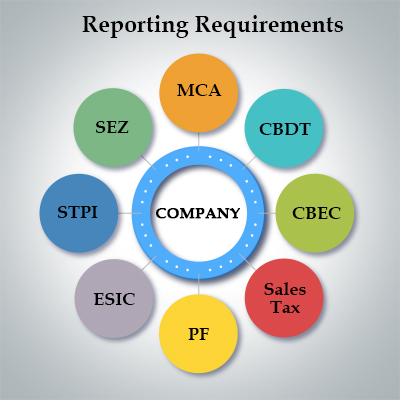The much-awaited introduction of the Goods and Service Tax (GST) regime in India is expected to be accompanied by a robust and advanced GST information network. This development has the potential to change the existing Indian company external reporting framework for good.
The GST network would connect millions of business establishments across the nation into one large tax information network that will, in addition, link the state and federal government revenue agencies and the banking system too.
The GST network will mirror the pulse of business activity in the nation. – K Balachandran
The GST Model
A true GST system works on the value-added principle with input credits and single-point data capture. Business entities across the country would get their input credits (presumably) once the counterparty details are counter-checked by the network. The multiplicity of filings to excise, service, and local state tax authorities are eliminated as well. In a nutshell, everyone has the incentive to be on the network.
Let’s look at how such a system can effectively play a pioneering role in streamlining and simplifying the information flow from businesses to the government and therefore improve regulation and policy responses while reducing compliance burden in the process.
An Illustration of GST Implementation
Consider a typical limited liability service company in India. It has to periodically report information to the Ministry of Corporate Affairs (MCA), Central Board of Direct Taxes (CBDT), Central Board of Excise and Customs (CBEC), state sales tax department, PF and ESIC agencies, and if operating from STPI and SEZ units, send data to these agencies as well.
Figure 1: Entities to which a Company Reports in the Current Scenario
Categories of Reporting Requirements
A bulk of these data sets would fall under three broad categories. Of course, the most important category would be that of financial reporting including tax calculations and underlying transactions, second would be those related to secretarial requirements under the Companies Act and finally, there would be employee-related information. For this discussion, we are not looking at a host of other regulatory requirements including environmental and other local requirements. Of course, over and above this there is a large exchange of information in the banking system as well.
Current Scenario
The key point to emphasize is that we have an excellent opportunity to standardize the core information that would go across to these multiple agencies. Right now that is not the case. (For example, ‘Net sales’ as defined by MCA will not be the same that is used by CBDT or CBEC). Secondly, if standardized information is converted into structured data the entire information supply chain benefits.
Steps for Robust and Advanced GST Information Network
Firstly enterprises could map information in their accounting systems into the required data fields and either maintain a consolidated reporting data repository or in a more rudimentary way, extract and send the information as and when required. This process is eminently feasible across SME accounting packages to large-scale ERP systems when coupled with the appropriate ‘bridge software’. The reusability of information would substantially reduce the compliance burden and ensure consistency as well.
From the regulators’ point of view, there is tremendous scope to run diagnostics across data delivered to multiple agencies that could trigger inconsistencies. This could help in an assessment and plug revenue leakage. Imagine a situation where the regulators have the power to connect the dots using information such as employee data, sales, and purchase transactions through the GST network, and export revenues, moving to the audited financial statements.
Finally, nothing should prevent the banking system too to build on this standardized and structured information to make the right lending decisions. This would be especially salutary for the beleaguered Indian SME sector struggling for working capital. Undoubtedly, better and faster credit decisions would help them the most.


